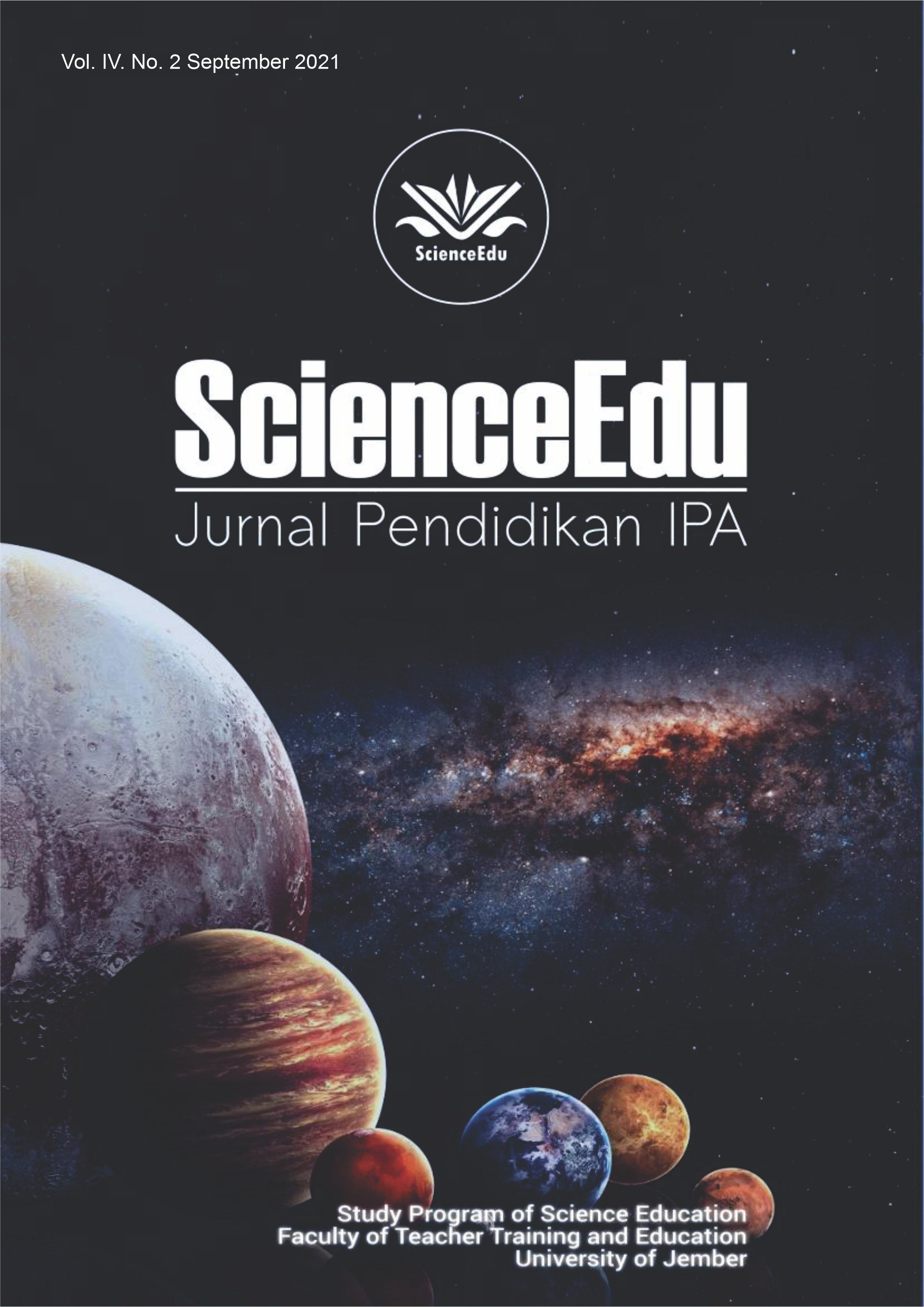DIGESTIVE SYSTEM E-MODULE BASED ON INTEGRATED-STEM IN STUDENT’S SCIENCE LITERACY AND LEARNING OUTCOME
Abstract
This article dicussses how the digestive system e-module based on integrated STEM is used to improve student’sscientific literacy and learning outcome. Scientific literacy is a person's ability to understand science, communicate science, and apply scientific knowledge to solve problems so that they have a high attitude and sensitivity to themselves and their environment in making decisions based on scientific considerations. This research is a development research). The method used is development model suggested by Borg and Gall (1989) in Sugiyono (2015). The research stages are, 1) Potential Problems; 2) Data Collection, 3) Product Design, 4) Product Review; 5) Design Revision; 6) Design Validation; 7) Product trial; 8) Product Revision; 9) Mass Product Manufacturing. The result of pre-research question given to students, it is known that from 37 students 34 of them have low or incomplete scientific literacy scores. So that 91.8% of students have a low level of scientific literacy and 8.1% of students have a good level of scientific literacy. The scientific literacy domain which has the lowest score is science attitude and the final product of the learning using e-module is gerd candy made by students. The developed of e-module is based on a STEM approach consisting of four aspects, namely: (1) Science; (2) Technology; (3) Engineering; and (4) Mathematics. This module is developed to increase students’ scientific literacy for four domains, namely: (1) the context of science; (2) Science knowledge; (3) Science competence; and (4) scientific attitude.
Downloads
References
Depdikbud. (2013). Permendikbud No. 22 Tahun 2016 tentang Standar Proses Pendidikan Dasar dan Menengah. Jakarta: Depdikbud.
Depdikbud. (2013). Permendikbud No. 23 Tahun 2016 tentang Standar Penilaian Pendidikan. Jakarta: Depdikbud
Ditjen PSMA Ditjen Pendidikan Dasar dan Menengah. (2017). Panduan Implementasi Keterampilan Abad 21 Kurikulum 2013 di SMA. Jakarta : Depdikbud.
Dwiningsih, K., Sukarmin, N. F., Muchlis, N. F., & Rahma, P. T. (2018). Pengembangan Media Pembelajaran Kimia Menggunakan Media Laboratorium Virtual Berdasarkan Paradigma Pembelajaran Di Era Global. Kwangsan: Jurnal Teknologi Pendidikan, 6 (2), 156.
Listiana, dkk. (2019). The Effect of Newtonian Dynamics Stem-Integrated Learning Strategy to Increase Scientific Literacy of Senior High School Students. Jurnal Ilmiah Pendidikan Fisika Al-BiRuNi, 08 (1), 43-52.
OECD. (2016). PISA 2015 Assessment and Analytical Framework: Science, Reading, Mathematic and Financial Literacy. Paris: OECD Publishing.
OECD. (2019). Indonesia-Country Note-PISA 2018 Results. OECD 2019 Volumes I-III: OECD Publishing. Paris-France.
Pusat Penilaian Pendidikan Kementrian Pendidikan dan Kebudayaan. 2019. Laporan Hasil Ujian Nasional. https://hasilun.puspendik.kemdikbud.go.id/. (Accessed on 10 November 2020 pukul 20.24.)





